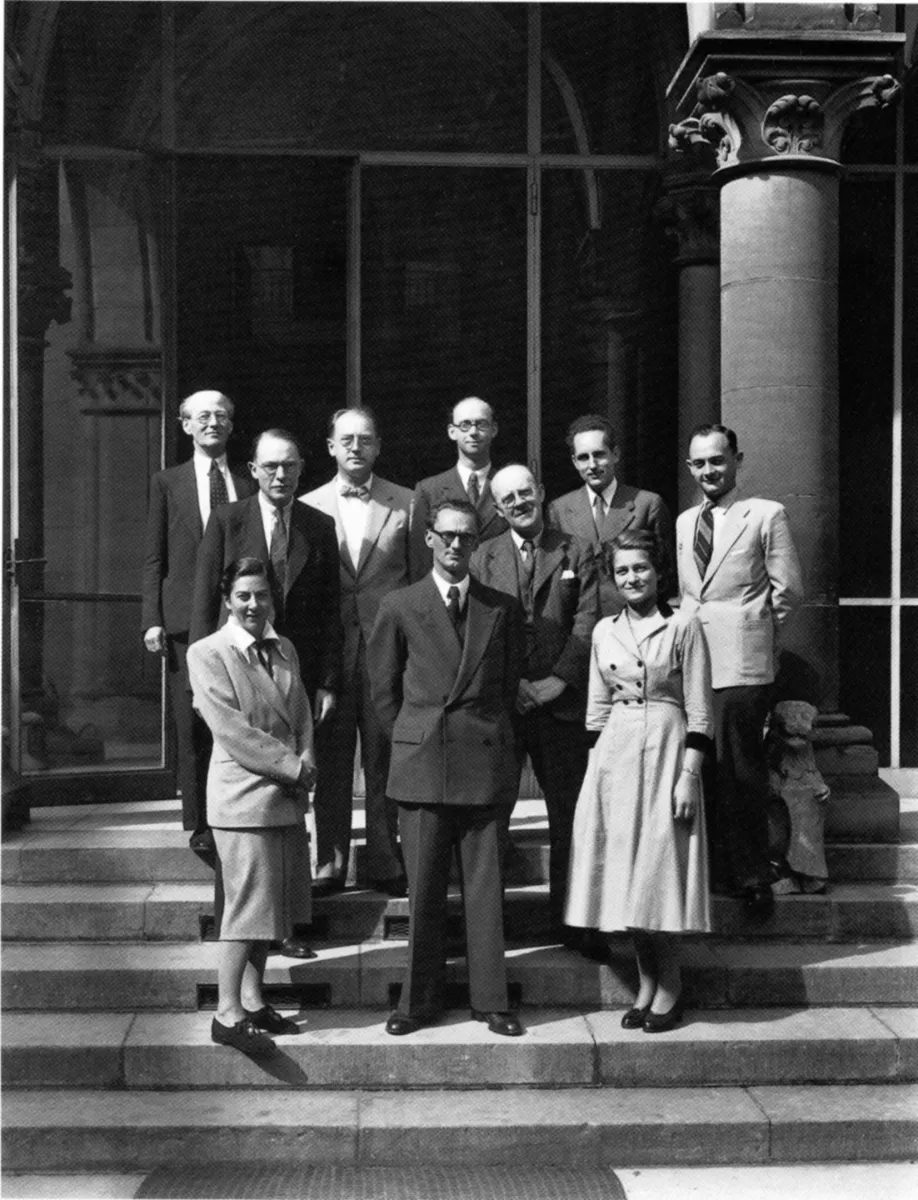A brief history of IIC
Early years: conservation from the 1930s to post-war
In 1930 the International Museums Office of the League of Nations held a conference in Rome on the examination and conservation of works of art. Following this meeting, the Museums Office issued a series of publications on the subject. In 1932 a technical journal of conservation studies was founded by the Fogg Museum, Harvard University, under the Managing Editorship of George Stout. Technical Studies in the Field of the Fine Arts continued publication until 1942.
During the second world war practical experience of climate control for works of art was acquired in the United Kingdom, while the repatriation of art treasures after the war brought together experts from Europe and the United States. They decided to revive Technical Studies and proposed the formation of an international body of conservators to continue the interchange of information which they had found of such benefit in the aftermath of the war.
Between 1946 and 1948 a series of meetings was held to discuss these proposals. Foremost among those involved were George Stout, W.G.Constable (Boston), Ian Rawlins (London) and Paul Coremans (Brussels).
Founding the IIC
Finally, in 1950, the International Institute for the Conservation of Museum Objects (it acquired its present title in 1959) was incorporated as a limited company in the United Kingdom. Its aims were "to improve the state of knowledge and standards of practice and to provide a common meeting ground and publishing body for all who are interested in and professionally skilled in the conservation of museum objects".
The Institute would become concerned with:
- The status of conservators, by forming a professional self-electing body
- Publications: abstracts of the technical literature, and original work with a scientific bias - the end of the "secrets of the Old Masters"
- Training, with the aim of raising standards
The office, established with the help of a grant from the Nuffield Foundation, was to be in London as the "midpoint" between the USA and continental Europe; the UK had beneficial tax laws, it was easy to receive funds there, and the Institute could obtain charitable status. The membership was to consist of Fellows - who would be "persons highly qualified in (or in positions of great authority in) conservation - and Associates, who would be "persons anxious to promote the objects of the Institute". Later a category of Institutional Members was introduced.
During 1948-50 approaches were made to likely Fellows. When the Institute was founded in 1950, the Founder Fellows were George Stout, Rutherford J.Gettens, Richard Buck, W.G. Constable, Murray Pease, Ian Rawlins, Harold Plenderleith, Sir Wallace Akers (chairman of ICI), Helmut Ruhemann and Paul Coremans; others who joined in that first year included Arthur van Schendel, René Sneyers and Sheldon and Caroline Keck. George Stout became the Institute's first President, with Harold Plenderleith as Treasurer and Ian Rawlins as Secretary, and office space was provided free by the Trustees of the National Gallery. The Institute moved to its own independent offices in 1968.
By 1952 there were about 100 Fellows and the Institute was opened to Associate members. In the same year Studies in Conservation made its appearance, first twice-yearly and later quarterly. IIC Abstracts (later Art and Archaeology Technical Abstracts) followed in 1955. In 1961, with the help of a grant from the Gulbenkian Foundation, the Institute held its first international conference.
International conferences
That meeting, in Rome, was attended by 150 people and the papers were published by Butterworths under the title Recent Advances in Conservation. Subsequently, conferences have been held at two or three year intervals and the papers published by IIC. The year 2000 saw the publication of a new, annual journal, Reviews in Conservation, and News in Conservation, the Institute's newspaper, was launched in 2007.
Regional groups
From 1958 onwards, Regional Groups of IIC developed in areas of concentrated membership to enable members to meet more often and to pursue matters of active local concern. Regional Groups are independent associations affiliated to the Institute. The Group is required to adhere to the aims and objectives of the Institute as expressed in the Memorandum of Association; its bye-laws must be approved by the IIC Council; and its officers must be members of IIC.
Governance
The Institute was governed in its early days by a Management Committee of three together with a Membership Committee and a Publications Committee. In 1958 this became a Council of 10, and today the Council numbers 18: President, four Vice-Presidents, Secretary-General, Treasurer, Director of Publications, and ten Ordinary Members. An attempt is made to reflect the geographical and professional balance of the membership in the Council. Candidates are elected by the Fellows, either in person or by proxy, at the Annual General Meeting.
Council Members, including the Secretary-General and Treasurer, give their services voluntarily, as do the Editors of Studies in Conservation. The Institute has four permanent members of staff. IIC cooperates closely with other organizations in the field, notably ICCROM and the Committee for Conservation of the International Council of Museums (ICOM-CC). In 1993 responsibility for AATA was assumed by the Getty Conservation Institute. The Institute has also been closely associated with the Butterworth-Heinemann Series in Conservation and Museology.

Brussels Preparatory Meeting, September 1948
From left -back row: Helmut Ruhemann, John Gettens,
Stephen Rees Jones, Arthur van Schendel;
middle: Ian Rawlins, Harold Plenderleith,
René Sneyers;
front: Madeleine Hours, Paul Coremans,
Mme. C. Anglade
(Photo © KIK-IRPA, Brussels www.kikirpa.be)